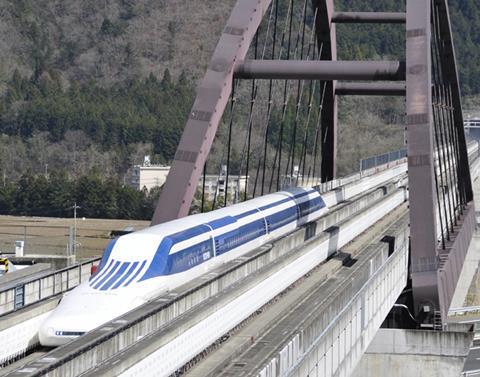
JAPAN: A new speed record for a magnetically levitated vehicle was set on April 21, when Central Japan Railway powered one of its Series L0 superconducting maglev units up to a maximum of 603 km/h on the test guideway in Yamanashi prefecture.
According to JR Central, a speed of more than 600 km/h was maintained for 10·8 sec, during which time the unit travelled 1·8 km.
The seven-car set had earlier achieved 590 km/h during a series of passenger-carrying trials, surpassing the 581 km/h record established by the MLX01 prototype in December 2003 before the test guideway was lengthened from 18·4 km to 42·8 km.
Following the recommissioning of the lengthened guideway in August 2013 and the delivery of additional Series L0 vehicles, JR Central has been undertaking endurance testing with two seven-car sets to investigate the reliability and durability of sustained high speed running.
This is seen as an essential precursor to construction of the planned Chuo maglev between Tokyo, Nagoya and eventually Osaka. A ceremony was held on December 17 to mark the start of construction on the 286 km Tokyo – Nagoya section, which is expected to be completed by 2027 at a cost of ¥5·4tr; the second phase to Osaka would follow around 2045.
With 85% of the Tokyo - Nagoya line to be built in tunnel, Chuo maglev services are expected to run at a maximum of 500 km/h in revenue operation, offering an end to end journey time of 40 min.

















